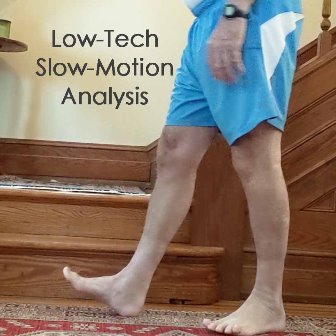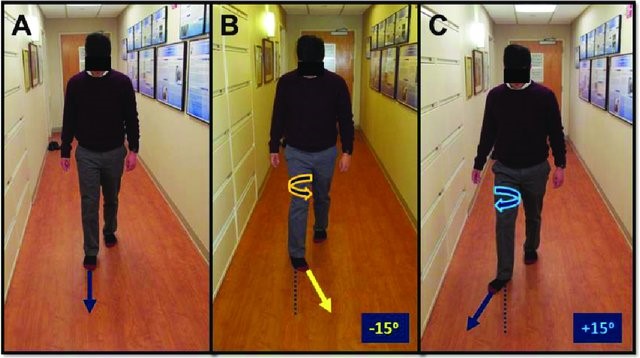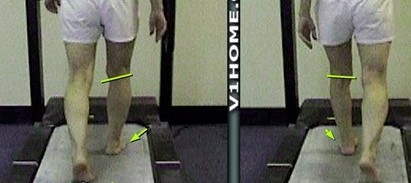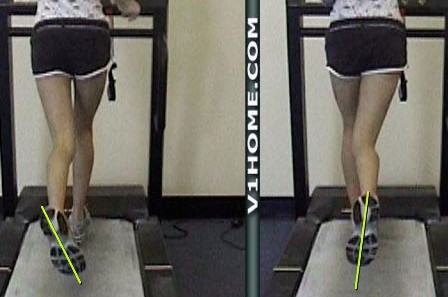Posts Tagged ‘Gait Analysis’
Clinical Predictive Rules for Management of Plantar Heel Pain
Medical professionals rely on clinical practice guidelines to have better outcomes, lower utilization of care, and lower costs. These guidelines have limited value since they often fail to keep up with new research findings or recently available diagnostic or therapeutic interventions. For example: clinical practice guidelines are available for plantar heel pain (plantar fasciitis) from…
Read MoreBetter cues & mental practice to improve skillful movements: Are external focus cues better than internal focus cues? It depends
Coaches, athletes, healthcare professionals, verbal cues, use mantras, self-talk, visual imagery, and skill training to improve movement. There are many cognitive strategies commonly used to improve human movement to move faster, farther, injury-free, and/or just look better moving. Types of cues: A substantial amount of research in the area of motor learning examines different types…
Read MoreGait Deviations Musculoskeletal Pain Syndromes: Is there a gait deviation or cluster of gait deviations which is common across musculoskeletal pain syndromes?
Gait deviations are considered risk factors and/or causative drivers for musculoskeletal pain syndromes. There is a growing body of research showing a relationship between gait deviations and musculoskeletal pain syndromes injuries: shin pain (here, & here,) ; patella-femoral arthralgia (here); IT band syndrome; Achilles pain; plantar heel pain (here, & here). There is growing consensus…
Read MoreLow-Tech Slow-Motion Analysis – “Dance Step to Nowhere
NDeviant movement during walking contributes to the development of or compensation for musculoskeletal pain syndromes. Diagnosis and treatment occur with visual observation and analysis of gait. The use of a smartphone video facilitates the analysis of motion walking. However, there are times when less technological motion analysis is necessary. When dealing with painful musculoskeletal syndromes…
Read MoreSymptom modification of painful gait
Symptom modification procedure is common practice in the Physical Therapy profession. This procedure involves identifying the specific movement, posture, and/or activity that reproduces the patient’s symptoms. Historically diagnosis of musculoskeletal problems was based on examination which selectively provoked musculoskeletal tissues by compressing or stretching the various tissues to provoke the symptoms. This provided direction for…
Read MorePain walking/running deviant gait – self treat &/or seek expert assistance
Experiencing pain when walking or running can be a complex problem. Asserting a hypothesis is a systematic way to solve complex problems. A hypothesis is an “if-then statement” or conditional statement which can be tested, accepted, or refuted. Hypothesis: If you have pain walking and/or running, then gait analysis to determine if there is a…
Read MoreAnalysis of Movement with Smartphone Video
Physical therapists are movement specialist according to the American Physical Therapy Association. Addressing issues related to the human movement system is what Physical Therapist do. The movement system is collection of systems (cardiovascular, pulmonary, endocrine, integumentary, nervous, and musculoskeletal) that interact to move the body or its component parts. Visual observation and analysis of movement…
Read MoreTotal Knee Joint Replacement – Are You Satisfied? Gait Analysis & Training Can Provide Post-Op Improvements
Pain and stiffness associated with osteoarthritis in knee joints can result in a limp, gait deviations and gait compensations. Gait deviations are variations from what is perceived as normal walking or running. These deviations are described as limitations, restrictions or weaknesses that lead to lack of mobility, stability or symmetry of movement. Gait deviations also…
Read MoreGait Deviation – Excessive Inward Rotation of Hip Joint
Excessive inward rotation of the hip joint can be a contributing factor to development of repetitive use injuries of: Lateral hip pain (gluteal muscle tendinopathy) Buttock pain (piriformis syndrome) Anterior knee pain (patella femoral arthralgia) Lateral knee pain (IT band syndrome Shin pain (posterior tibial tendinopathy) Plantar heel pain This video first illustrates the gait…
Read MoreIt’s not hip to be in pain – Gait analysis & training can improve those pains in the backside
Are you experiencing pain in the lateral aspect (outer side) of your hips and/or buttocks when you walk or run? If so, using slow-motion video to identify gait deviations and working on your gait with a physical therapist can help solve the problem. Gait deviations are movements that differ from the norm. A deviation can…
Read More









